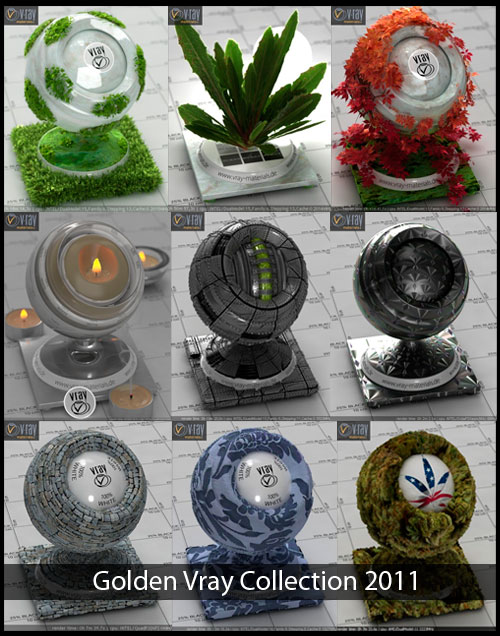Requested Item
XML error in File: http://topgfx.com/forum/subscribe-5.xml
XML error: Opening and ending ...
NDonate And Become A VIP
Contact Us
Administrators:
admin - Site/Tech Issues/ Member Issues/ VIP Issues
Mac - Site/Tech Issues
WuTeVa - Member Issues
Moderators:
BigBrother - Forum, Posting or Comment Problem
vrxitachi - Forum, Posting or Comment Problem
Don_k - Forum, Posting or Comment Problem
DropsOfJupiter - Forum, Posting or Comment Problem
Share Your Render
Chat Box
Send Me PM for any Kind Of Help
¹ New Categories
¹ Old Categories
O Top Rated Articles
Post Calendar
Partner Site
Top News
Latest Feed
XML error in File: https://news.google.com/news?q=3d%20modeling&output=rss
XML error: at line 0
Recent Searches
Server Time
Sunday 28th of April 2024 12:48:20 PM
Home
Contact Us
Basic Search on xtragfx.com
Edit Images Online
Advertise on Topgfx
Topgfx Sitemap
RSS Feed
Topgfx Free 3D Models » Tutorial » TESTOUT MCAD 70-320 - Developing XML Web services & Sever components with C# and .NET | English
TESTOUT MCAD 70-320 - Developing XML Web services & Sever components with C# and .NET | English

TESTOUT MCAD 70-320 - Developing XML Web services & Sever components with C# and .NET | English
CourseSim
CourseSim is a comprehensive learning tool that is aligned with vendor-developed certification objectives. The CourseSim materials integrate multimedia technologies, applied simulation technologies, instructional animations, and technical graphic images into a sophisticated learning environment.
LabSim
LabSim is the world's highest fdelity simulation product that aligns with the leading IT certifications. LabSim allows you to simulate hardware, operating systems and network configurations on your computer without the need of additional hardware or software. It is like having an interactive learning lab, without the expensive setup costs.
ExamSim
ExamSim software is designed to give students practical experience for taking certification exams. The tests look and feel just like the actual exams. This tool is critical to assess practical knowledge of training objectives and concepts. Each exam title comes with hundreds of randomized practice questions that cover all official exam objectives.
Topics Covered:
Product info:
Videos: 80
Demonstrations: 62
Simulations: 43
Fact Sheets: 55
Exam Questions: 157
Exams: 5
Other Course of Tesout MCAD Series:
Testout C# for Programmers Course Suite
Contents:
0.0 Course Introduction
0.1 Course Introduction
0.1.1 Course Introduction
0.1.2 N-tier Architecture
0.1.3 Using the Visual Studio Simulator
1.0 Windows Services
1.1 Windows Services
1.1.1 Windows Services
1.1.2 Using the Services MMC
1.1.3 Creating a Windows Service
1.1.4 Services Facts
1.1.5 Create a Windows Service
1.2 Service Events
1.2.1 Service Events
1.2.2 Business Logic Sample
1.2.3 Adding a Timer
1.2.4 Service Event Facts
1.2.5 Add a Service Timer
1.2.6 Event Logging
1.2.7 Using the Default Event Log
1.2.8 Using Custom Event Logs
1.2.9 Event Log Facts
1.2.10 Log Events to the Default Log
1.2.11 Use a Custom Event Log
1.3 Performance Counters
1.3.1 Performance Counters
1.3.2 Using Performance Counters
1.3.3 Performance Counter Facts
1.3.4 Add Performance Counters
1.4 Service Installation
1.4.1 .NET Installer Classes
1.4.2 Overriding Installer Methods
1.4.3 AutoStart a Windows Service
1.4.4 Override Installer Methods
1.4.5 Adding an Event Log Installer
1.4.6 Add an Event Log Installer
1.4.7 Adding a Performance Counter Installer
1.4.8 Add a Performance Counter Installer
1.4.9 Using InstallUtil
1.4.10 Service Installation Facts
1.5 Debugging Services
1.5.1 Service Debugging
1.5.2 Debugging Services
1.5.3 Debugging Services Facts
2.0 Serviced Components (COM+)
2.1 COM+ Concepts
2.1.1 COM+ and the N-tier Architecture
2.1.2 COM+ Facts
2.1.3 MS Transaction Services (MTS)
2.1.4 MTS Facts
2.1.5 Role-based Security
2.1.6 JIT Activation
2.1.7 Object Construction
2.1.8 Object Pooling
2.1.9 Queued Components
2.1.10 Loosely Coupled Events
2.1.11 Shared Property Manager (SPM)
2.1.12 COM+ Features
2.2 Configuring a COM+ Application
2.2.1 Installing a COM+ Application
2.2.2 Adding Components
2.2.3 Defining Security Roles and Users
2.2.4 Calling COM+ Components
2.2.5 Configuration Tasks
2.2.6 Call COM+ Components
2.3 Serviced Components
2.3.1 Creating a Class Library Project
2.3.2 Create a Class Library Project
2.3.3 Strong Named Assemblies
2.3.4 Defining a Strong Named Assembly
2.3.5 Using a Construction String
2.3.6 Use a Construction String
2.3.7 Using SetComplete and SetAbort
2.3.8 Use Transactions
2.3.9 Serviced Component Facts
2.4 Attributes
2.4.1 Attributes
2.4.2 Setting Assembly Level Attributes
2.4.3 Set Assembly Level Attributes
2.4.4 Setting Class Level Attributes
2.4.5 Set Class Level Attributes
2.4.6 Setting Method Level Attributes
2.4.7 Set Method Level Attributes
2.4.8 Attribute Facts
2.5 Registration
2.5.1 Registration Methods
2.5.2 Using Regsvcs.exe
2.5.3 Registration Facts
2.6 Security
2.6.1 Authentication and Authorization
2.6.2 COM+ Authentication Facts
2.6.3 Declarative Role-based Security
2.6.4 Using Declarative Security
2.6.5 Add Declarative Security
2.6.6 Programmatic Role-based Security
2.6.7 Using Programmatic Security
2.6.8 Configure Programmatic Security
2.6.9 COM+ Security Facts
3.0 .NET Remoting
3.1 Remoting Concepts
3.1.1 .NET Remoting
3.1.2 Internal Architecture
3.1.3 Remoting Architecture Facts
3.1.4 Security
3.1.5 Remoting Security Facts
3.1.6 Example System Description
3.2 Activation
3.2.1 Activation
3.2.2 Server-side Activation
3.2.3 Implementing Server-side Activation
3.2.4 Client-side Activation
3.2.5 Activation Facts
3.2.6 Configure Server-side Activation
3.2.7 Configure Remotable Objects
3.3 Channels
3.3.1 Channels
3.3.2 Categorizations
3.3.3 Channel Types
3.3.4 Channel Registration
3.3.5 Registering Channels
3.3.6 Channel Facts
3.3.7 Register a TCP Channel
3.4 Configuration
3.4.1 Configuration Options
3.4.2 Using the Config File
3.4.3 Configuration Facts
3.4.4 Edit the Config File
3.5 Events and Delegates
3.5.1 Events and Delegates
3.5.2 Event Architecture
3.5.3 Implementing Events
3.5.4 Event and Delegate Facts
3.6 Asynchronous Processing
3.6.1 Asynchronous Processing
3.6.2 Server Response
3.6.3 Implementing Asynchronous Processing
3.6.4 Asynchronous Processing Facts
4.0 ADO .NET
4.1 ADO.NET Concepts
4.1.1 ADO.NET Overview
4.1.2 ADO.NET Architecture
4.1.3 ADO.NET Components
4.2 Manipulating Data
4.2.1 Connecting to a Database
4.2.2 Connection Facts
4.2.3 Establish a Connection
4.2.4 Using ExecuteScalar
4.2.5 Using ExecuteNonQuery
4.2.6 Command Facts
4.2.7 DataReader Facts
4.2.8 Use ExecuteScalar
4.2.9 Insert Data
4.2.10 Update Data
4.2.11 Delete Data
4.2.12 Stored Procedure Facts
4.3 DataSets
4.3.1 DataSets
4.3.2 Creating a DataSets
4.3.3 Using the DataAdapter Configuration Wizard
4.3.4 Using a DataAdapter
4.3.5 Define Table Relationship
4.3.6 Manually Using a DataSet
4.3.7 Configure a DataSet
4.3.8 Updating DataSets
4.3.9 Merging DataSets
4.3.10 Copying DataSets
4.3.11 Managing DataSets
4.3.12 DataSet and DataAdapter Facts
4.4 DataViews
4.4.1 DataViews
4.4.2 Implementing Views
4.4.3 DataView Facts
4.4.4 Sort and Filter Data
5.0 XML
5.1 XML
5.1.1 XML
5.1.2 DOM and XmlDocument
5.1.3 XML Basics
5.1.4 Programmatically Creating an XML File
5.1.5 Create an XML File
5.2 XmlReader and XmlWriter
5.2.1 XmlReader
5.2.2 Using XmlTextReader
5.2.3 XmlReader Facts
5.2.4 Read an XML File
5.2.5 XmlWriter
5.2.6 Using XmlTextWriter
5.2.7 XmlWriter Facts
5.2.8 Write to an XML Document
5.3 XPathNavigator
5.3.1 Navigation Architecture
5.3.2 Navigating Documents
5.3.3 XPathNavigator Facts
5.3.4 Filter XML Data
5.4 Schemas
5.4.1 Schemas
5.4.2 Schema Example
5.4.3 Schema Elements
5.5 Validation
5.5.1 XmlValidatingReader
5.5.2 Using XmlValidatingReader
5.5.3 XmlValidatingReader Facts
5.5.4 Validate a Schema
5.6 DataSet Integration
5.6.1 DataSet Integration
5.6.2 XML DataSet Facts
5.6.3 Read XML Data into a DataSet
6.0 XML Web Services
6.1 XML Web Services
6.1.1 Web Services
6.1.2 Web Services Architecture
6.1.3 XML Web Services Facts
6.2 Creating a Web Service
6.2.1 Create a Web Service
6.2.2 Creating a Basic Web Service
6.2.3 Building Web Services Facts
6.2.4 Create a Web Service
6.3 Consuming a Web Service
6.3.1 Discovery and Integration
6.3.2 Using .disco
6.3.3 Web Service Proxy
6.3.4 Creating a Client Application
6.3.5 Using a Web Service Facts
6.3.6 Use a Web Service in a Windows Application
6.3.7 Use a Web Service in a Web Application
6.3.8 Asynchronous Invocation
6.3.9 Using Asynchronous Invocation
6.3.10 Invoke Methods Asynchronously
6.4 SOAP Extensions
6.4.1 SOAP Extensions
6.4.2 SOAP Extension Configuration
6.4.3 Configuring SOAP Extensions
6.4.4 SOAP Extension Facts
6.5 Configuration and Security
6.5.1 Configuration and Security
6.5.2 Web Service Configuration Facts
6.5.3 Web Service Security Facts
7.0 Testing and Debugging
7.1 Testing
7.1.1 Unit Test Plans
7.1.2 Testing Facts
7.2 Debugging
7.2.1 Debugging Tools
7.2.2 Using a Debugging Session
7.2.3 Attaching to an Existing Process
7.2.4 Debugging Facts
7.3 Exception Handling
7.3.1 Exception Management
7.3.2 Managing Exceptions
7.3.3 Exception Facts
7.3.4 Handle Exceptions
7.4 Tracing
7.4.1 Tracing
7.4.2 Listeners and Configuration
7.4.3 Using a Custom Listener
7.4.4 Trace and Debug Object Facts
7.4.5 Trace Switch Facts
7.4.6 Use Trace Switches
7.4.7 Add a Custom Listener
8.0 Deployment
8.1 Deployment Overview
8.1.1 Deployment Overview
8.2 Assemblies
8.2.1 Assemblies
8.2.2 Versioning and Strong Naming
8.2.3 Updating the Version Number
8.2.4 Generating the Strong Name Key
8.2.5 Managing Assemblies
8.2.6 Assembly Facts
8.3 Satellite Assemblies
8.3.1 Satellite Assemblies
8.3.2 Building Satellite Assemblies
8.3.3 Using Satellite Assemblies
8.3.4 Satellite Assembly Facts
8.4 Global Assembly Cache (GAC)
8.4.1 Global Assembly Cache (GAC)
8.4.2 Using the .NET Framework Configuration Tool
8.4.3 Policy Binding
8.4.4 Configuring a Different Component Version
8.5 COM Interoperability
8.5.1 COM Interoperability
8.5.2 Using COM Components
8.5.3 COM Interoperability Facts
8.6 Windows Installer
8.6.1 Windows and Web Setup Projects
8.6.2 Merge Modules
8.6.3 Using Merge Modules
8.6.4 Deployment Facts
ExamSim (157 questions)
Preparing for Certification
Exam Objectives
Exam FAQs
How to Register for an Exam
Exam-taking Hints and Tips
Objective 100, All Questions (74 questions)
Objective 200, All Questions (32 questions)
Objective 300, All Questions (26 questions)
Objective 400, All Questions (25 questions)
Typical Exam
CourseSim is a comprehensive learning tool that is aligned with vendor-developed certification objectives. The CourseSim materials integrate multimedia technologies, applied simulation technologies, instructional animations, and technical graphic images into a sophisticated learning environment.
LabSim
LabSim is the world's highest fdelity simulation product that aligns with the leading IT certifications. LabSim allows you to simulate hardware, operating systems and network configurations on your computer without the need of additional hardware or software. It is like having an interactive learning lab, without the expensive setup costs.
ExamSim
ExamSim software is designed to give students practical experience for taking certification exams. The tests look and feel just like the actual exams. This tool is critical to assess practical knowledge of training objectives and concepts. Each exam title comes with hundreds of randomized practice questions that cover all official exam objectives.
Topics Covered:
Product info:
Videos: 80
Demonstrations: 62
Simulations: 43
Fact Sheets: 55
Exam Questions: 157
Exams: 5
Other Course of Tesout MCAD Series:
Testout C# for Programmers Course Suite
Contents:
0.0 Course Introduction
0.1 Course Introduction
0.1.1 Course Introduction
0.1.2 N-tier Architecture
0.1.3 Using the Visual Studio Simulator
1.0 Windows Services
1.1 Windows Services
1.1.1 Windows Services
1.1.2 Using the Services MMC
1.1.3 Creating a Windows Service
1.1.4 Services Facts
1.1.5 Create a Windows Service
1.2 Service Events
1.2.1 Service Events
1.2.2 Business Logic Sample
1.2.3 Adding a Timer
1.2.4 Service Event Facts
1.2.5 Add a Service Timer
1.2.6 Event Logging
1.2.7 Using the Default Event Log
1.2.8 Using Custom Event Logs
1.2.9 Event Log Facts
1.2.10 Log Events to the Default Log
1.2.11 Use a Custom Event Log
1.3 Performance Counters
1.3.1 Performance Counters
1.3.2 Using Performance Counters
1.3.3 Performance Counter Facts
1.3.4 Add Performance Counters
1.4 Service Installation
1.4.1 .NET Installer Classes
1.4.2 Overriding Installer Methods
1.4.3 AutoStart a Windows Service
1.4.4 Override Installer Methods
1.4.5 Adding an Event Log Installer
1.4.6 Add an Event Log Installer
1.4.7 Adding a Performance Counter Installer
1.4.8 Add a Performance Counter Installer
1.4.9 Using InstallUtil
1.4.10 Service Installation Facts
1.5 Debugging Services
1.5.1 Service Debugging
1.5.2 Debugging Services
1.5.3 Debugging Services Facts
2.0 Serviced Components (COM+)
2.1 COM+ Concepts
2.1.1 COM+ and the N-tier Architecture
2.1.2 COM+ Facts
2.1.3 MS Transaction Services (MTS)
2.1.4 MTS Facts
2.1.5 Role-based Security
2.1.6 JIT Activation
2.1.7 Object Construction
2.1.8 Object Pooling
2.1.9 Queued Components
2.1.10 Loosely Coupled Events
2.1.11 Shared Property Manager (SPM)
2.1.12 COM+ Features
2.2 Configuring a COM+ Application
2.2.1 Installing a COM+ Application
2.2.2 Adding Components
2.2.3 Defining Security Roles and Users
2.2.4 Calling COM+ Components
2.2.5 Configuration Tasks
2.2.6 Call COM+ Components
2.3 Serviced Components
2.3.1 Creating a Class Library Project
2.3.2 Create a Class Library Project
2.3.3 Strong Named Assemblies
2.3.4 Defining a Strong Named Assembly
2.3.5 Using a Construction String
2.3.6 Use a Construction String
2.3.7 Using SetComplete and SetAbort
2.3.8 Use Transactions
2.3.9 Serviced Component Facts
2.4 Attributes
2.4.1 Attributes
2.4.2 Setting Assembly Level Attributes
2.4.3 Set Assembly Level Attributes
2.4.4 Setting Class Level Attributes
2.4.5 Set Class Level Attributes
2.4.6 Setting Method Level Attributes
2.4.7 Set Method Level Attributes
2.4.8 Attribute Facts
2.5 Registration
2.5.1 Registration Methods
2.5.2 Using Regsvcs.exe
2.5.3 Registration Facts
2.6 Security
2.6.1 Authentication and Authorization
2.6.2 COM+ Authentication Facts
2.6.3 Declarative Role-based Security
2.6.4 Using Declarative Security
2.6.5 Add Declarative Security
2.6.6 Programmatic Role-based Security
2.6.7 Using Programmatic Security
2.6.8 Configure Programmatic Security
2.6.9 COM+ Security Facts
3.0 .NET Remoting
3.1 Remoting Concepts
3.1.1 .NET Remoting
3.1.2 Internal Architecture
3.1.3 Remoting Architecture Facts
3.1.4 Security
3.1.5 Remoting Security Facts
3.1.6 Example System Description
3.2 Activation
3.2.1 Activation
3.2.2 Server-side Activation
3.2.3 Implementing Server-side Activation
3.2.4 Client-side Activation
3.2.5 Activation Facts
3.2.6 Configure Server-side Activation
3.2.7 Configure Remotable Objects
3.3 Channels
3.3.1 Channels
3.3.2 Categorizations
3.3.3 Channel Types
3.3.4 Channel Registration
3.3.5 Registering Channels
3.3.6 Channel Facts
3.3.7 Register a TCP Channel
3.4 Configuration
3.4.1 Configuration Options
3.4.2 Using the Config File
3.4.3 Configuration Facts
3.4.4 Edit the Config File
3.5 Events and Delegates
3.5.1 Events and Delegates
3.5.2 Event Architecture
3.5.3 Implementing Events
3.5.4 Event and Delegate Facts
3.6 Asynchronous Processing
3.6.1 Asynchronous Processing
3.6.2 Server Response
3.6.3 Implementing Asynchronous Processing
3.6.4 Asynchronous Processing Facts
4.0 ADO .NET
4.1 ADO.NET Concepts
4.1.1 ADO.NET Overview
4.1.2 ADO.NET Architecture
4.1.3 ADO.NET Components
4.2 Manipulating Data
4.2.1 Connecting to a Database
4.2.2 Connection Facts
4.2.3 Establish a Connection
4.2.4 Using ExecuteScalar
4.2.5 Using ExecuteNonQuery
4.2.6 Command Facts
4.2.7 DataReader Facts
4.2.8 Use ExecuteScalar
4.2.9 Insert Data
4.2.10 Update Data
4.2.11 Delete Data
4.2.12 Stored Procedure Facts
4.3 DataSets
4.3.1 DataSets
4.3.2 Creating a DataSets
4.3.3 Using the DataAdapter Configuration Wizard
4.3.4 Using a DataAdapter
4.3.5 Define Table Relationship
4.3.6 Manually Using a DataSet
4.3.7 Configure a DataSet
4.3.8 Updating DataSets
4.3.9 Merging DataSets
4.3.10 Copying DataSets
4.3.11 Managing DataSets
4.3.12 DataSet and DataAdapter Facts
4.4 DataViews
4.4.1 DataViews
4.4.2 Implementing Views
4.4.3 DataView Facts
4.4.4 Sort and Filter Data
5.0 XML
5.1 XML
5.1.1 XML
5.1.2 DOM and XmlDocument
5.1.3 XML Basics
5.1.4 Programmatically Creating an XML File
5.1.5 Create an XML File
5.2 XmlReader and XmlWriter
5.2.1 XmlReader
5.2.2 Using XmlTextReader
5.2.3 XmlReader Facts
5.2.4 Read an XML File
5.2.5 XmlWriter
5.2.6 Using XmlTextWriter
5.2.7 XmlWriter Facts
5.2.8 Write to an XML Document
5.3 XPathNavigator
5.3.1 Navigation Architecture
5.3.2 Navigating Documents
5.3.3 XPathNavigator Facts
5.3.4 Filter XML Data
5.4 Schemas
5.4.1 Schemas
5.4.2 Schema Example
5.4.3 Schema Elements
5.5 Validation
5.5.1 XmlValidatingReader
5.5.2 Using XmlValidatingReader
5.5.3 XmlValidatingReader Facts
5.5.4 Validate a Schema
5.6 DataSet Integration
5.6.1 DataSet Integration
5.6.2 XML DataSet Facts
5.6.3 Read XML Data into a DataSet
6.0 XML Web Services
6.1 XML Web Services
6.1.1 Web Services
6.1.2 Web Services Architecture
6.1.3 XML Web Services Facts
6.2 Creating a Web Service
6.2.1 Create a Web Service
6.2.2 Creating a Basic Web Service
6.2.3 Building Web Services Facts
6.2.4 Create a Web Service
6.3 Consuming a Web Service
6.3.1 Discovery and Integration
6.3.2 Using .disco
6.3.3 Web Service Proxy
6.3.4 Creating a Client Application
6.3.5 Using a Web Service Facts
6.3.6 Use a Web Service in a Windows Application
6.3.7 Use a Web Service in a Web Application
6.3.8 Asynchronous Invocation
6.3.9 Using Asynchronous Invocation
6.3.10 Invoke Methods Asynchronously
6.4 SOAP Extensions
6.4.1 SOAP Extensions
6.4.2 SOAP Extension Configuration
6.4.3 Configuring SOAP Extensions
6.4.4 SOAP Extension Facts
6.5 Configuration and Security
6.5.1 Configuration and Security
6.5.2 Web Service Configuration Facts
6.5.3 Web Service Security Facts
7.0 Testing and Debugging
7.1 Testing
7.1.1 Unit Test Plans
7.1.2 Testing Facts
7.2 Debugging
7.2.1 Debugging Tools
7.2.2 Using a Debugging Session
7.2.3 Attaching to an Existing Process
7.2.4 Debugging Facts
7.3 Exception Handling
7.3.1 Exception Management
7.3.2 Managing Exceptions
7.3.3 Exception Facts
7.3.4 Handle Exceptions
7.4 Tracing
7.4.1 Tracing
7.4.2 Listeners and Configuration
7.4.3 Using a Custom Listener
7.4.4 Trace and Debug Object Facts
7.4.5 Trace Switch Facts
7.4.6 Use Trace Switches
7.4.7 Add a Custom Listener
8.0 Deployment
8.1 Deployment Overview
8.1.1 Deployment Overview
8.2 Assemblies
8.2.1 Assemblies
8.2.2 Versioning and Strong Naming
8.2.3 Updating the Version Number
8.2.4 Generating the Strong Name Key
8.2.5 Managing Assemblies
8.2.6 Assembly Facts
8.3 Satellite Assemblies
8.3.1 Satellite Assemblies
8.3.2 Building Satellite Assemblies
8.3.3 Using Satellite Assemblies
8.3.4 Satellite Assembly Facts
8.4 Global Assembly Cache (GAC)
8.4.1 Global Assembly Cache (GAC)
8.4.2 Using the .NET Framework Configuration Tool
8.4.3 Policy Binding
8.4.4 Configuring a Different Component Version
8.5 COM Interoperability
8.5.1 COM Interoperability
8.5.2 Using COM Components
8.5.3 COM Interoperability Facts
8.6 Windows Installer
8.6.1 Windows and Web Setup Projects
8.6.2 Merge Modules
8.6.3 Using Merge Modules
8.6.4 Deployment Facts
ExamSim (157 questions)
Preparing for Certification
Exam Objectives
Exam FAQs
How to Register for an Exam
Exam-taking Hints and Tips
Objective 100, All Questions (74 questions)
Objective 200, All Questions (32 questions)
Objective 300, All Questions (26 questions)
Objective 400, All Questions (25 questions)
Typical Exam
Download HotFile:
http://hotfile.com/dl/21606737/661256a/MCAD_70-320.part01.rar.html
http://hotfile.com/dl/21606721/94b400a/MCAD_70-320.part02.rar.html
http://hotfile.com/dl/21606713/3038909/MCAD_70-320.part03.rar.html
http://hotfile.com/dl/21606845/79f5fce/MCAD_70-320.part04.rar.html
http://hotfile.com/dl/21663750/f744e4f/MCAD_70-320.part05.rar.html
http://hotfile.com/dl/21663778/bd6c8eb/MCAD_70-320.part06.rar.html
http://hotfile.com/dl/21682565/a775987/MCAD_70-320.part07.rar.html
http://hotfile.com/dl/21627071/a9944d3/MCAD_70-320.part08.rar.html
http://hotfile.com/dl/21627028/464578f/MCAD_70-320.part09.rar.html
http://hotfile.com/dl/21606721/94b400a/MCAD_70-320.part02.rar.html
http://hotfile.com/dl/21606713/3038909/MCAD_70-320.part03.rar.html
http://hotfile.com/dl/21606845/79f5fce/MCAD_70-320.part04.rar.html
http://hotfile.com/dl/21663750/f744e4f/MCAD_70-320.part05.rar.html
http://hotfile.com/dl/21663778/bd6c8eb/MCAD_70-320.part06.rar.html
http://hotfile.com/dl/21682565/a775987/MCAD_70-320.part07.rar.html
http://hotfile.com/dl/21627071/a9944d3/MCAD_70-320.part08.rar.html
http://hotfile.com/dl/21627028/464578f/MCAD_70-320.part09.rar.html
filesonic
http://www.filesonic.com/file/18751917/MCAD_70-320.part01.rar
http://www.filesonic.com/file/18751931/MCAD_70-320.part02.rar
http://www.filesonic.com/file/18751919/MCAD_70-320.part03.rar
http://www.filesonic.com/file/18751927/MCAD_70-320.part04.rar
http://www.filesonic.com/file/18752013/MCAD_70-320.part05.rar
http://www.filesonic.com/file/18751937/MCAD_70-320.part06.rar
http://www.filesonic.com/file/18751933/MCAD_70-320.part07.rar
http://www.filesonic.com/file/18752827/MCAD_70-320.part08.rar
http://www.filesonic.com/file/18752005/MCAD_70-320.part09.rar
http://www.filesonic.com/file/18751931/MCAD_70-320.part02.rar
http://www.filesonic.com/file/18751919/MCAD_70-320.part03.rar
http://www.filesonic.com/file/18751927/MCAD_70-320.part04.rar
http://www.filesonic.com/file/18752013/MCAD_70-320.part05.rar
http://www.filesonic.com/file/18751937/MCAD_70-320.part06.rar
http://www.filesonic.com/file/18751933/MCAD_70-320.part07.rar
http://www.filesonic.com/file/18752827/MCAD_70-320.part08.rar
http://www.filesonic.com/file/18752005/MCAD_70-320.part09.rar
Cheers with interchangable links
10X Speed Direct Download TESTOUT MCAD 70-320 - Developing XML Web services & Sever components with C# and .NET | English
Related News

|
Golden Vray Collection 2011 Golden Vray Collection 2011 .mat | 4.61Gb |

|
Windows Web Services Essential Training Windows Web Services Essential Training English | WMV3 1024 x768 | MP3 48 Kbps | 1.65 GB |
Information
Would you like to leave your comment? Please Login to your account to leave comments. Don't have an account? You can create a free account now.
Would you like to leave your comment? Please Login to your account to leave comments. Don't have an account? You can create a free account now.















